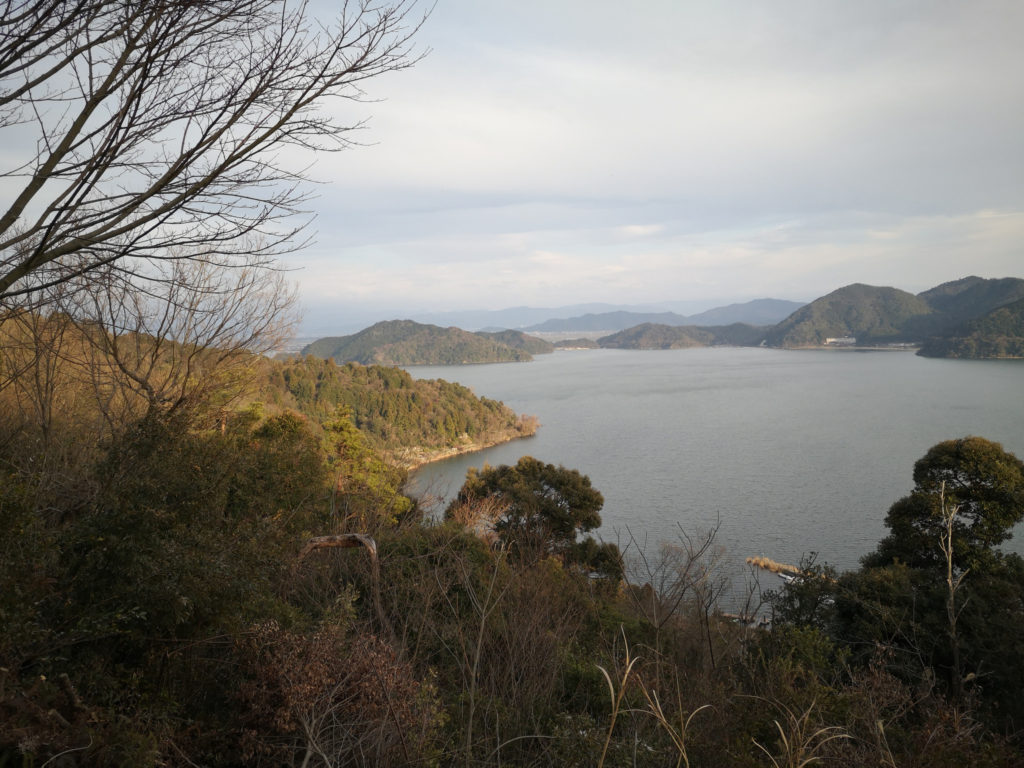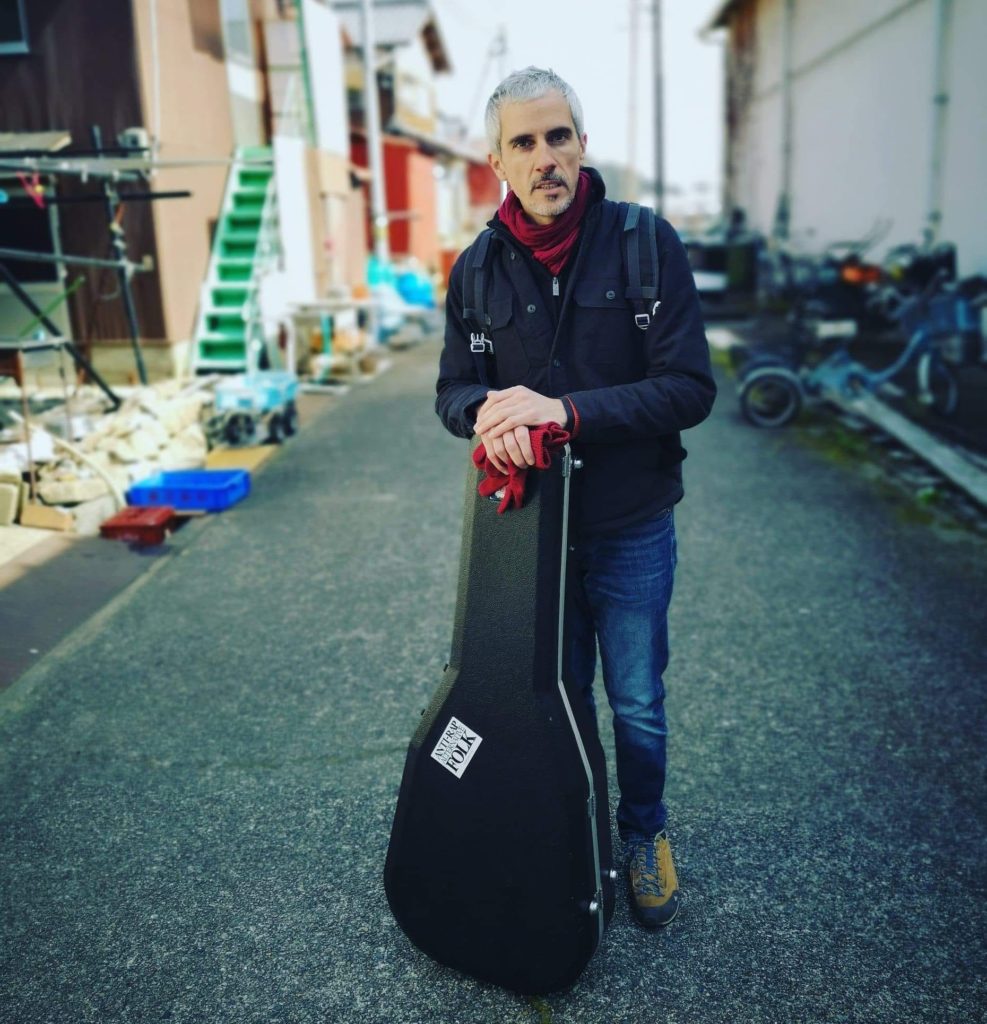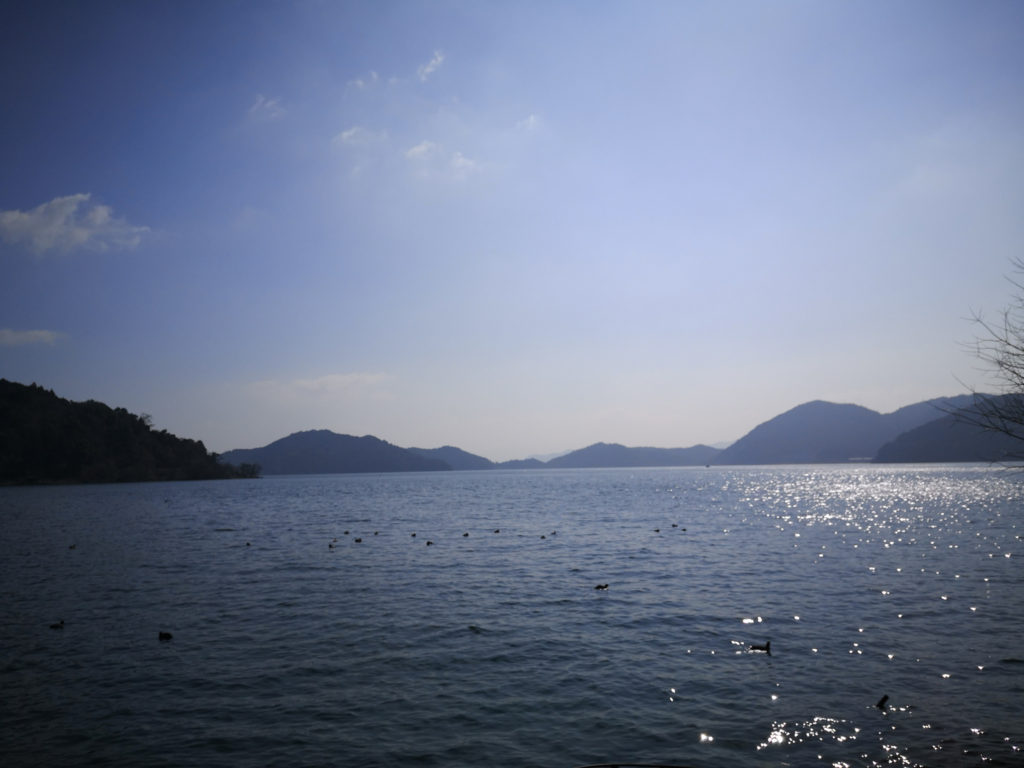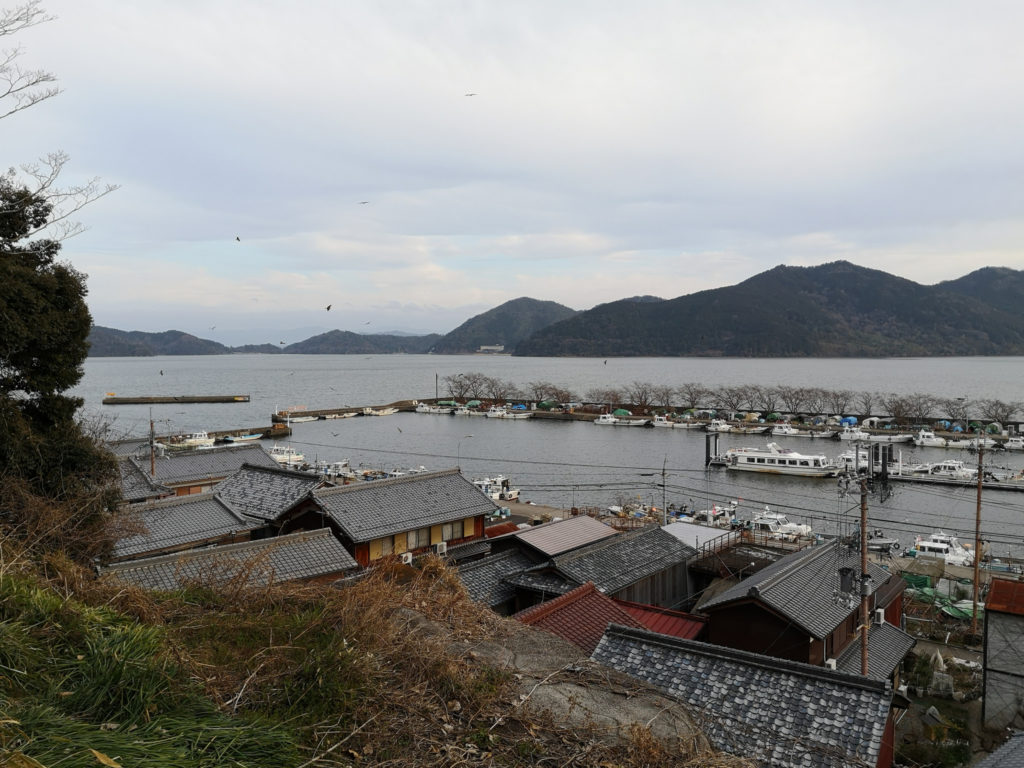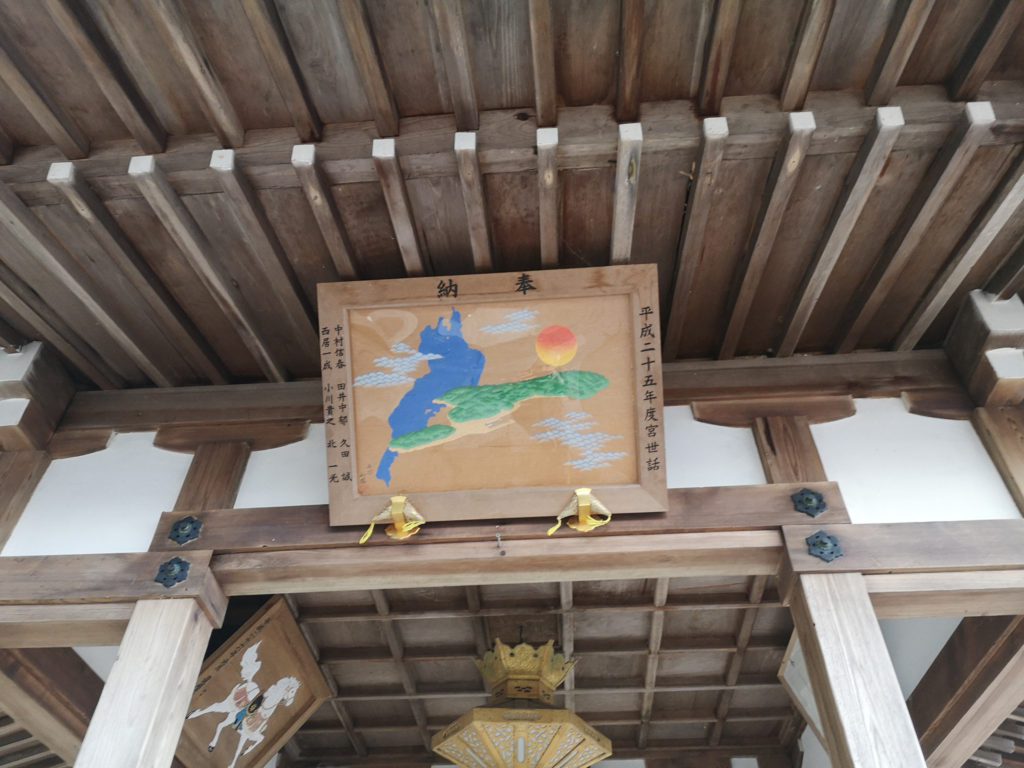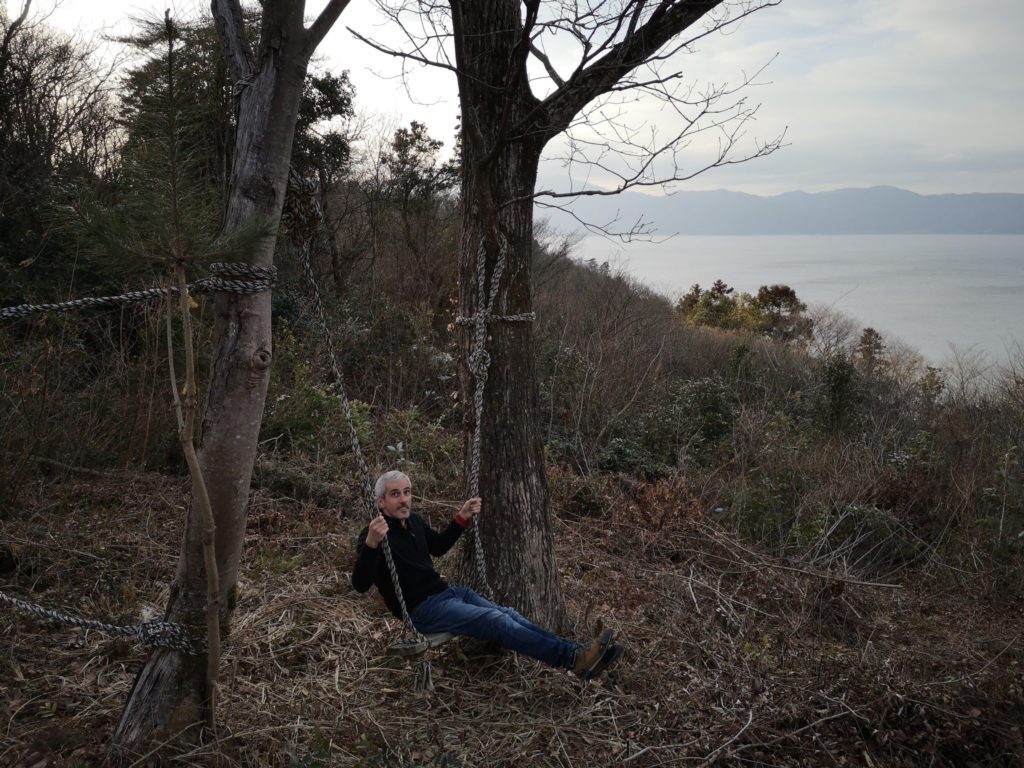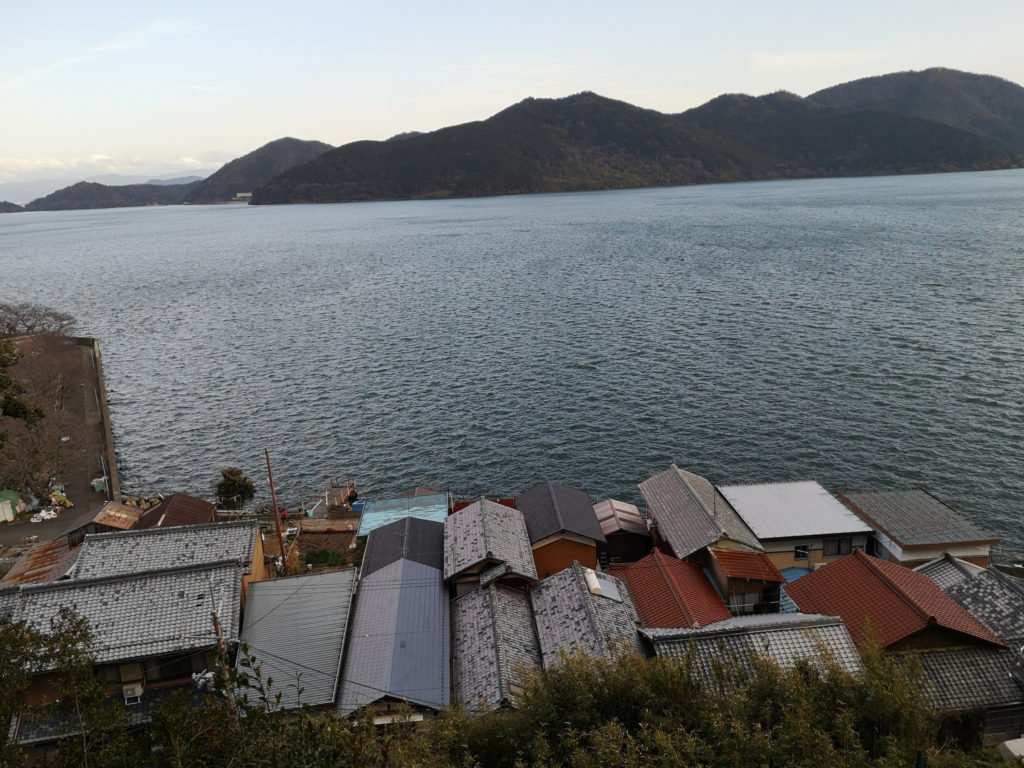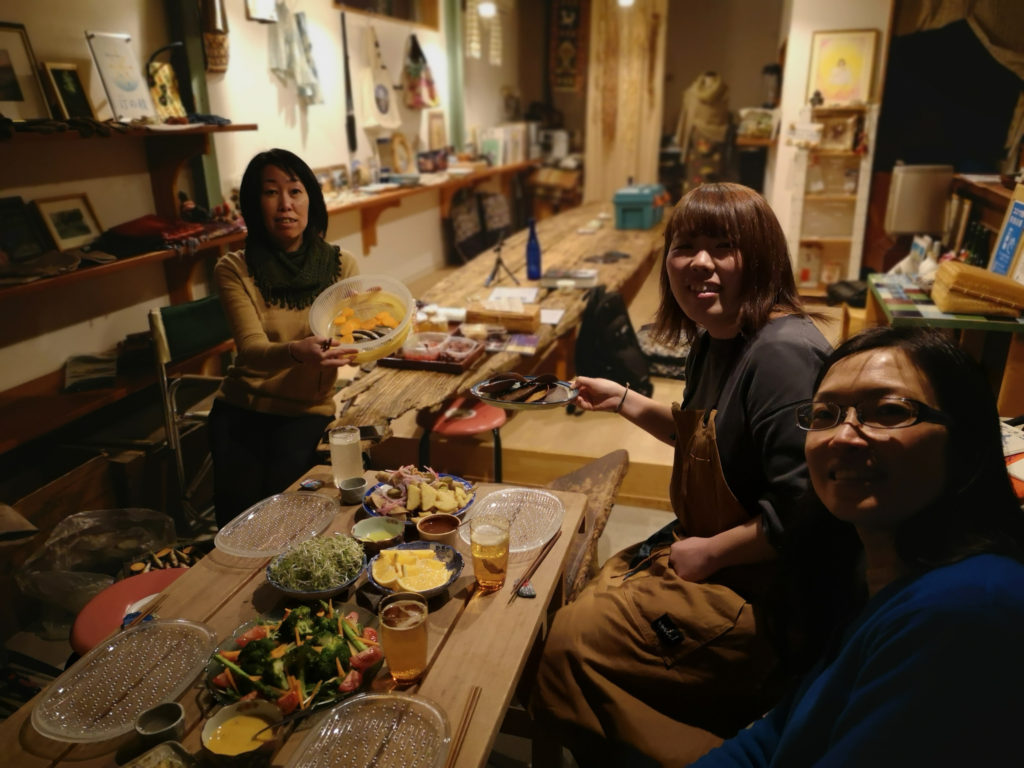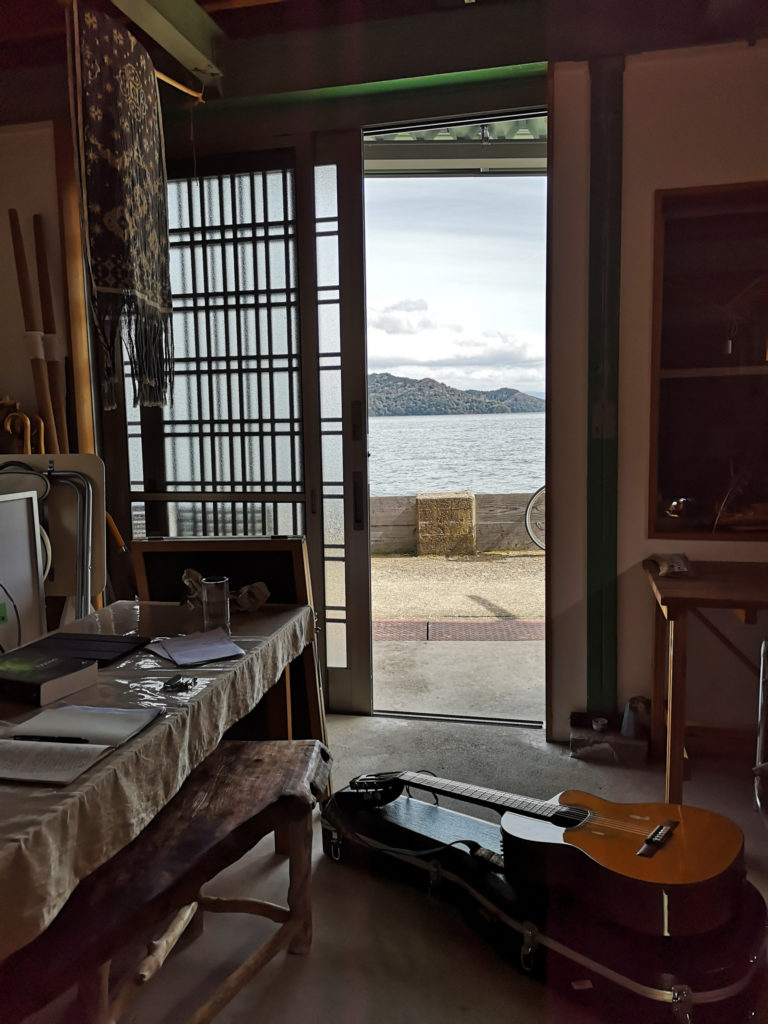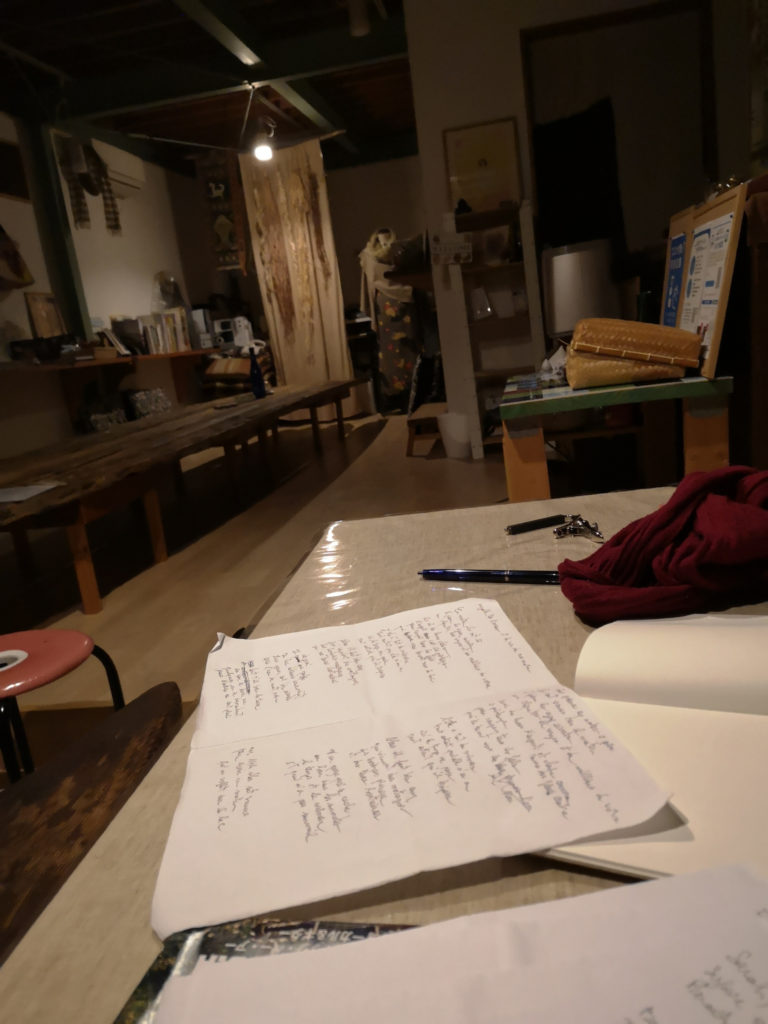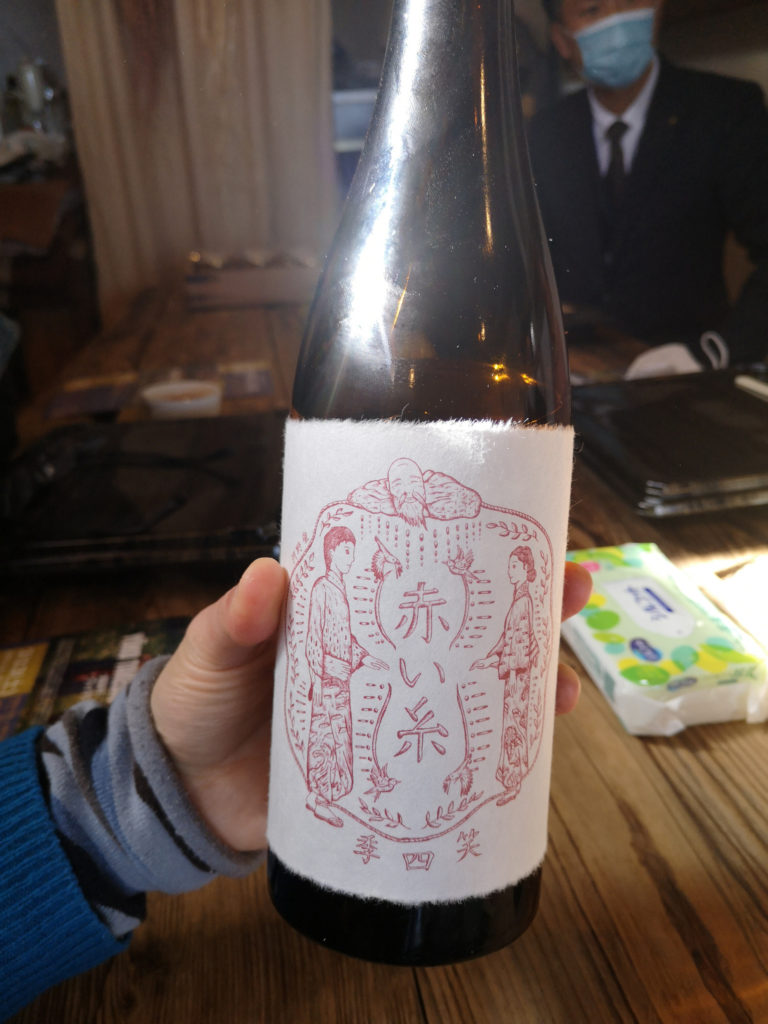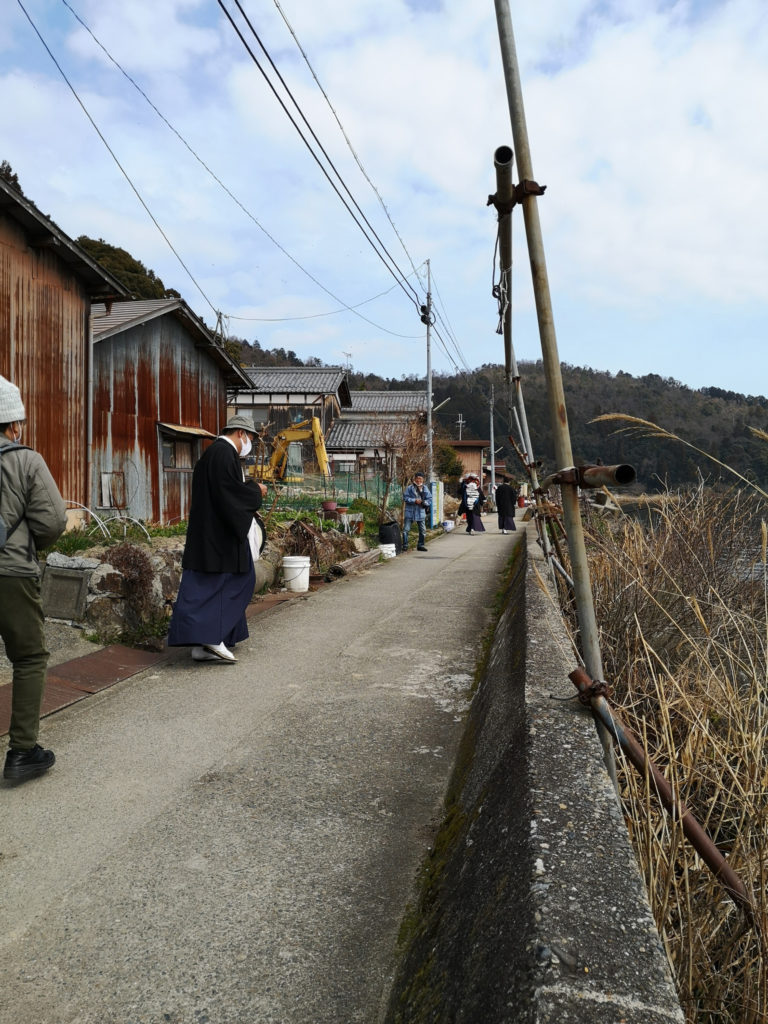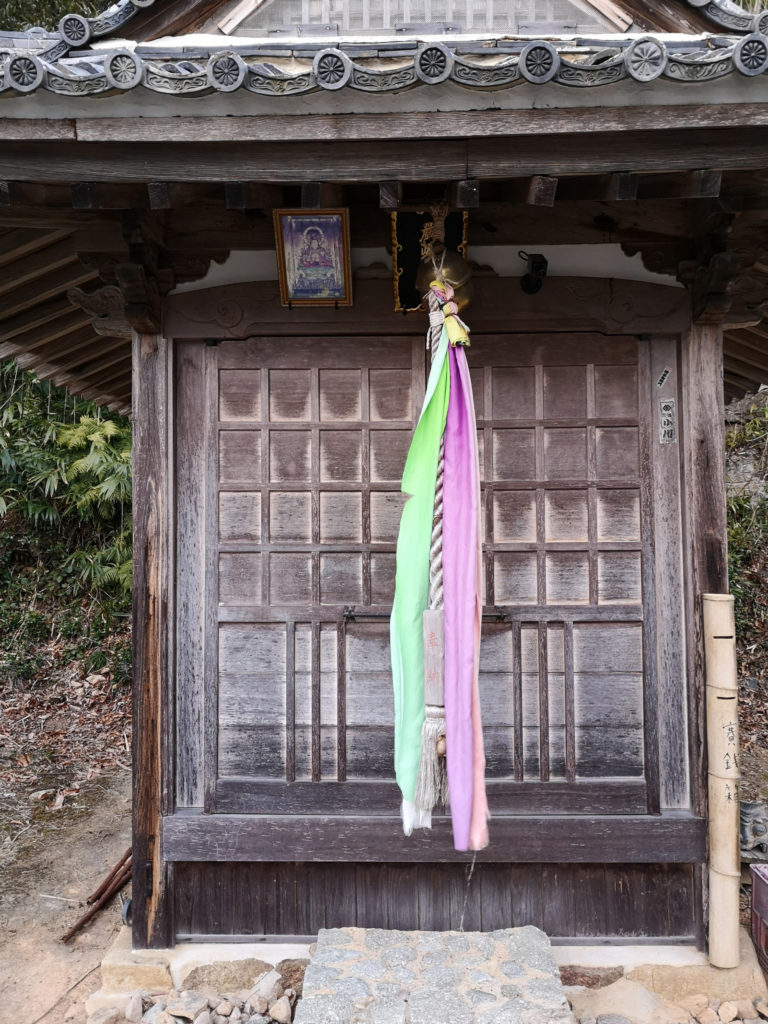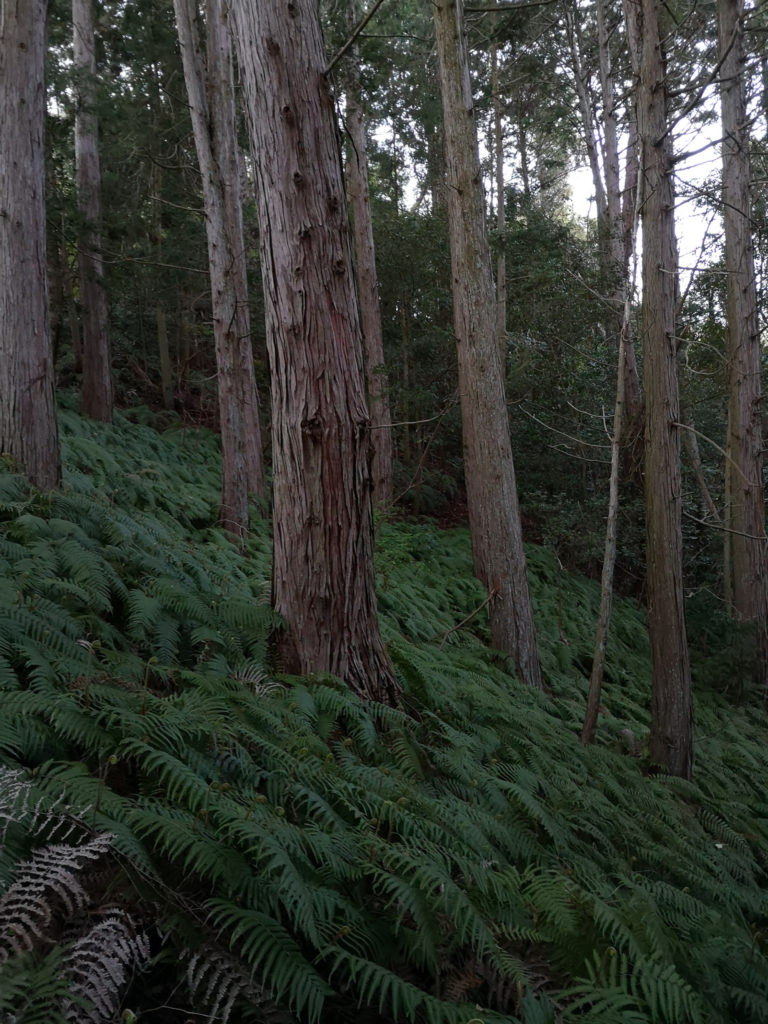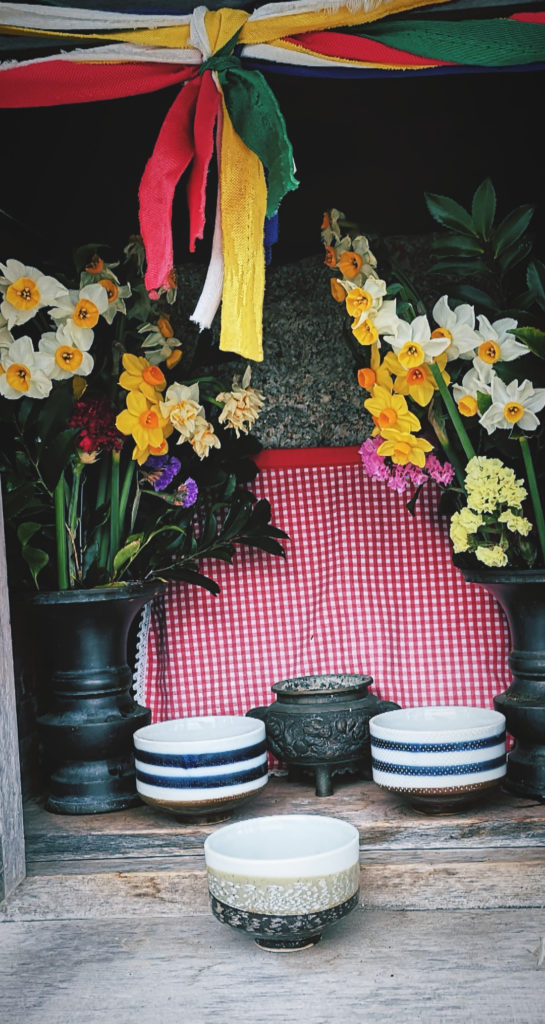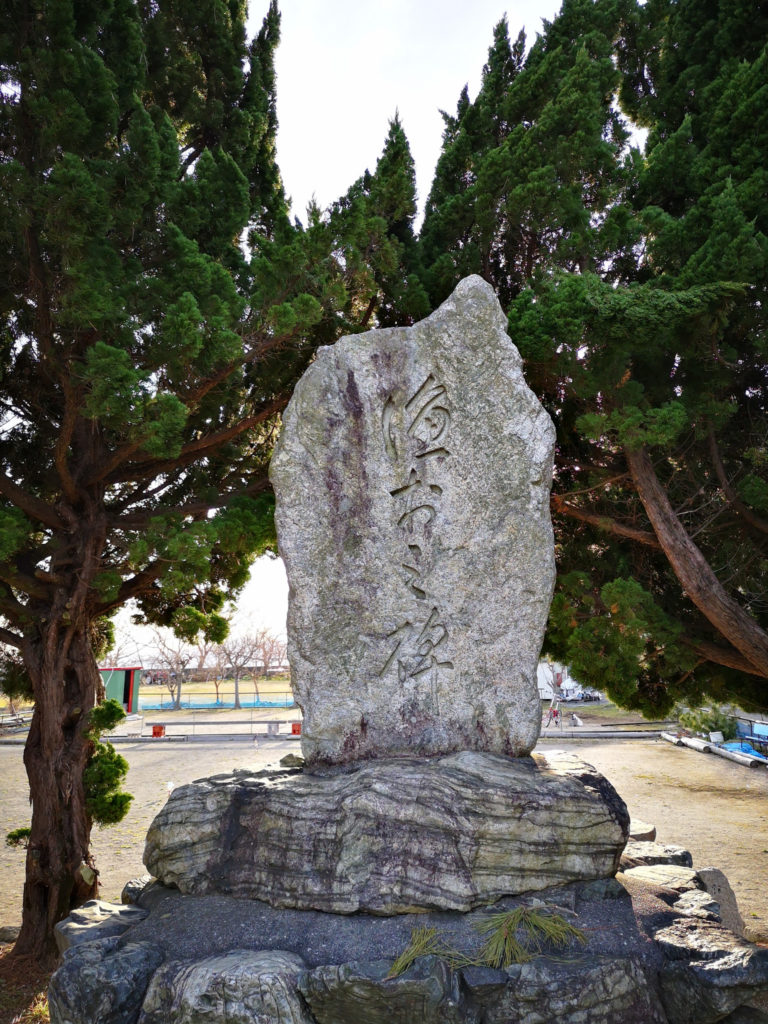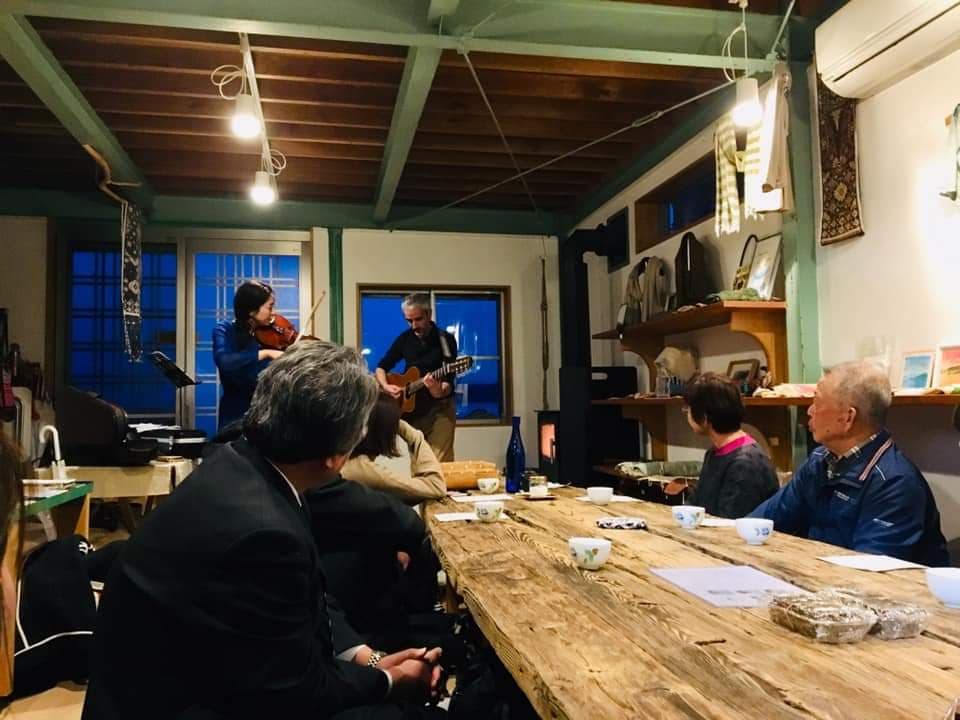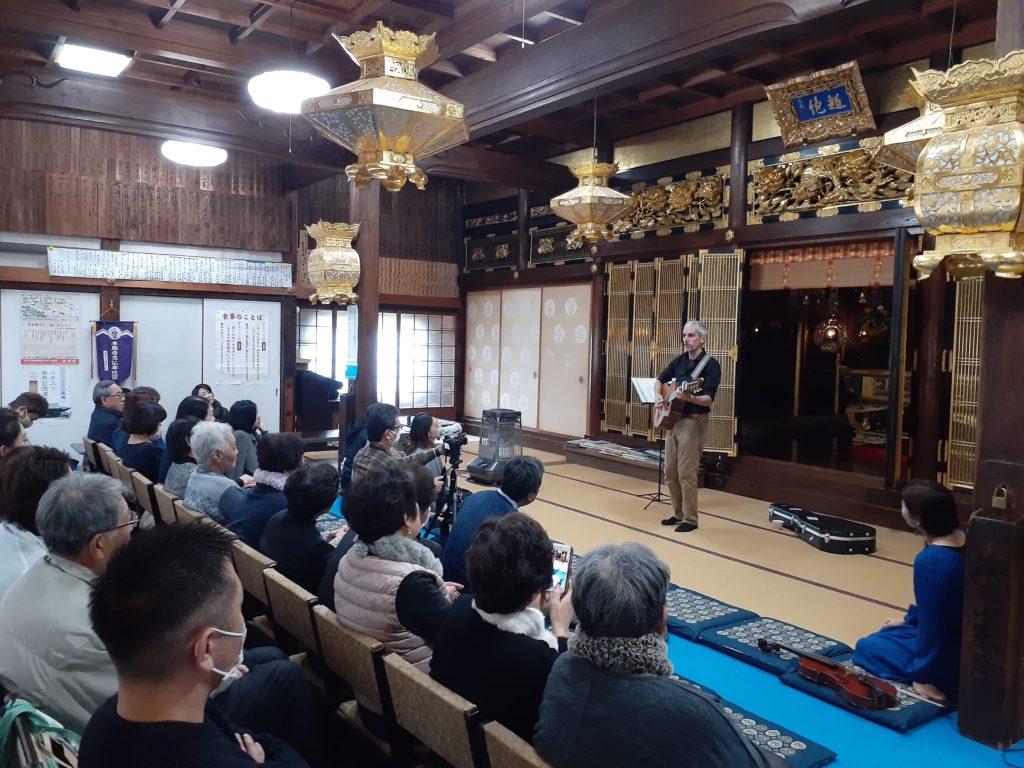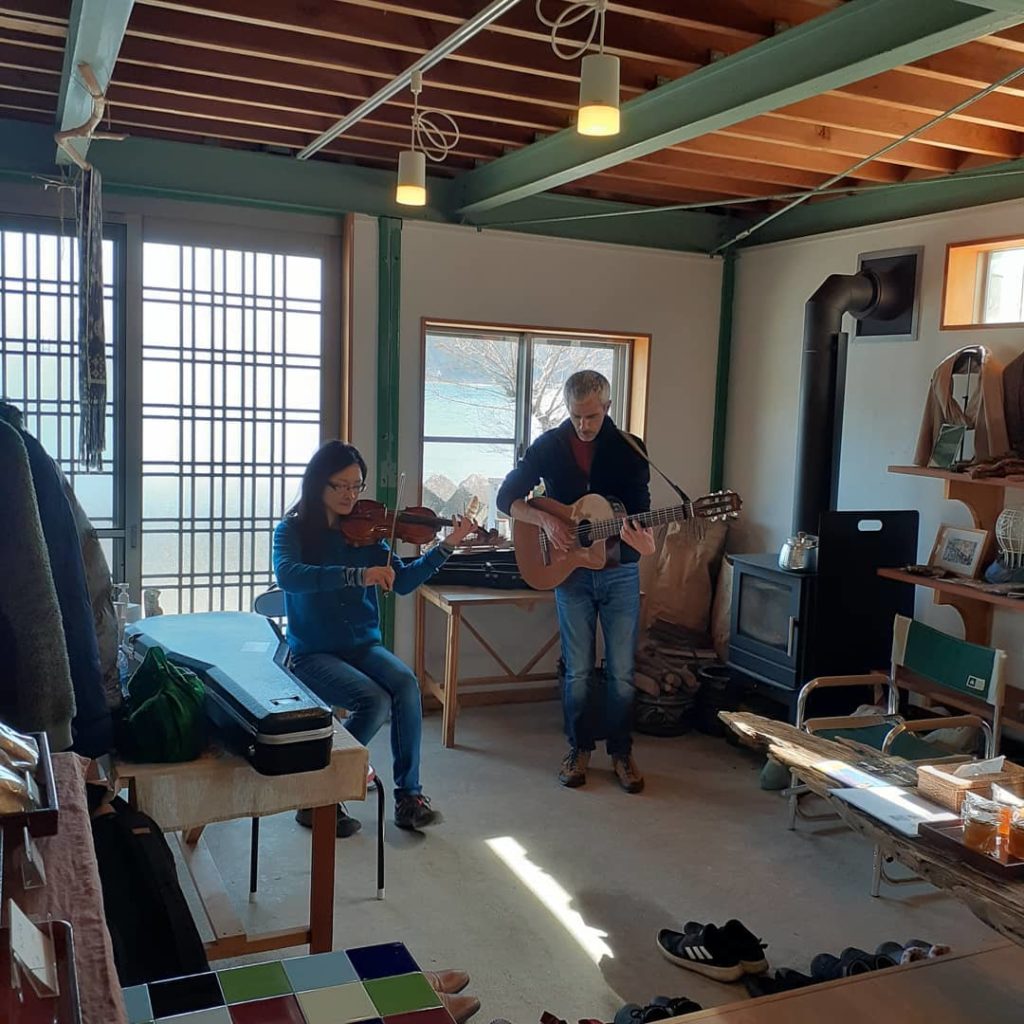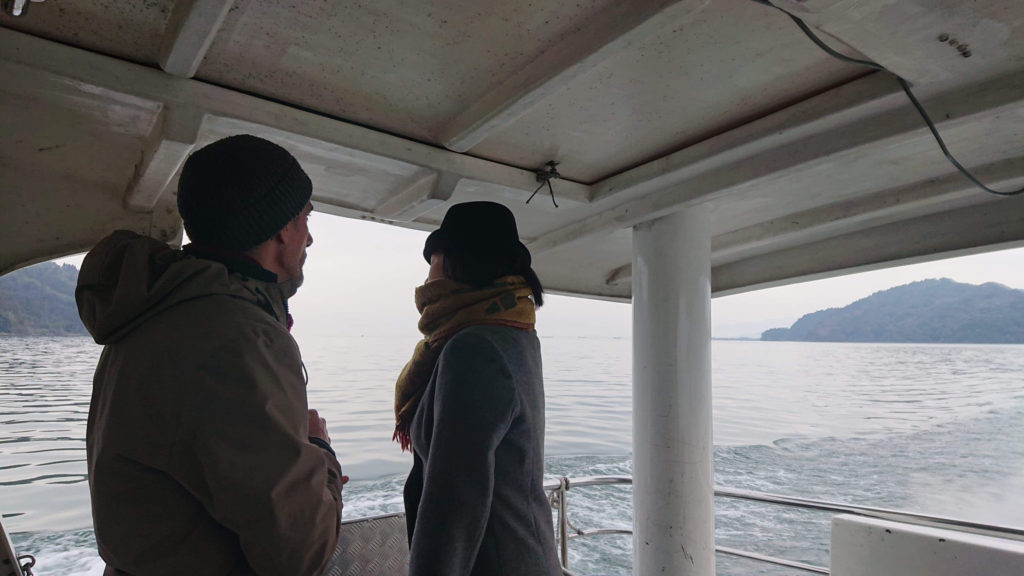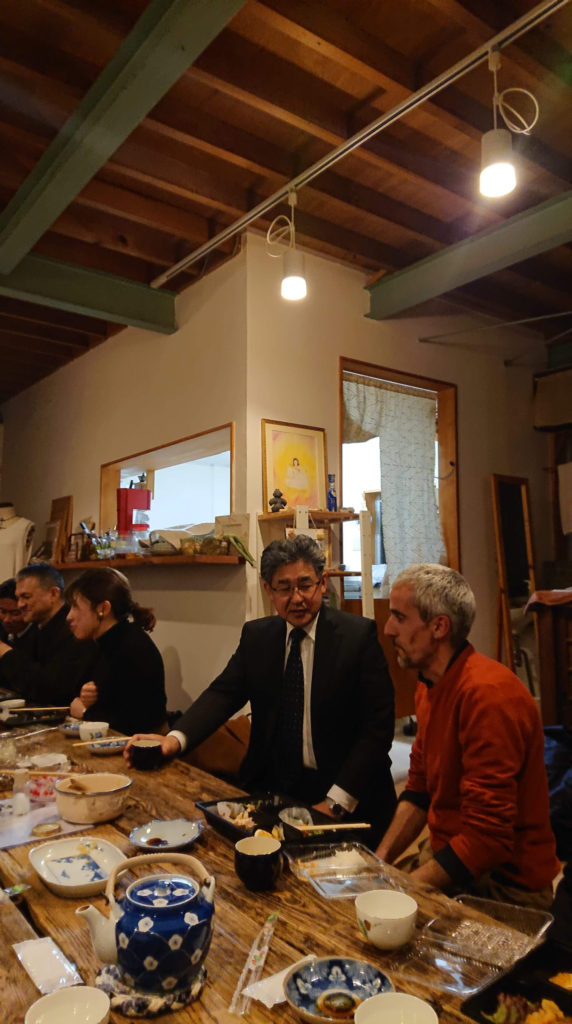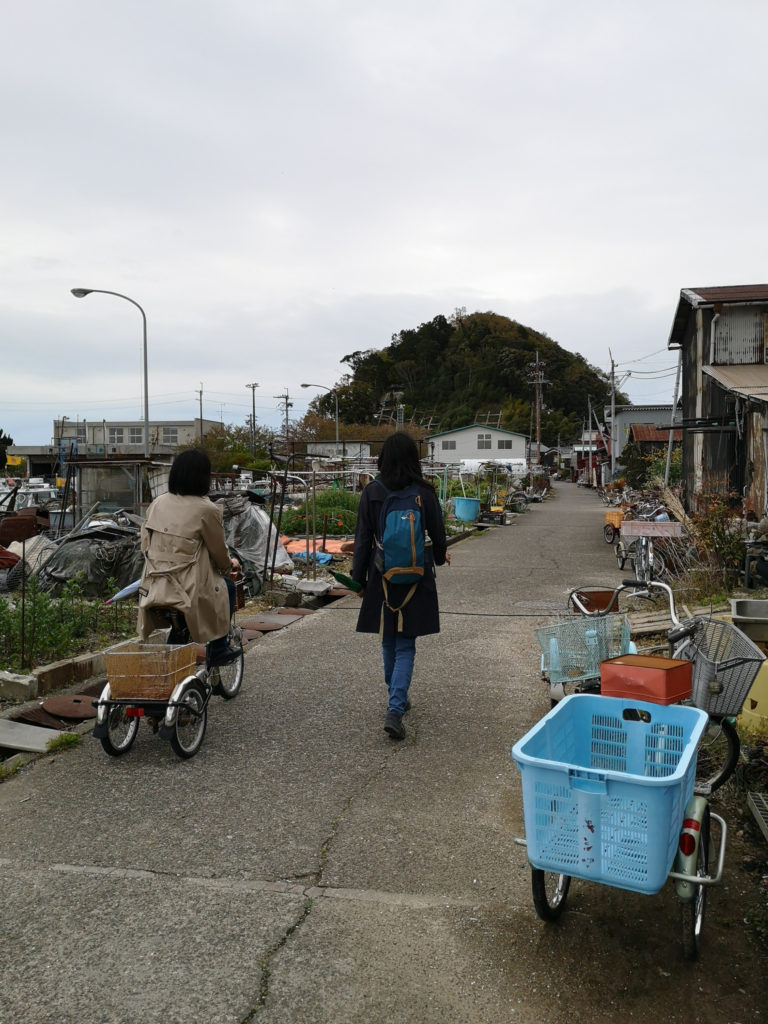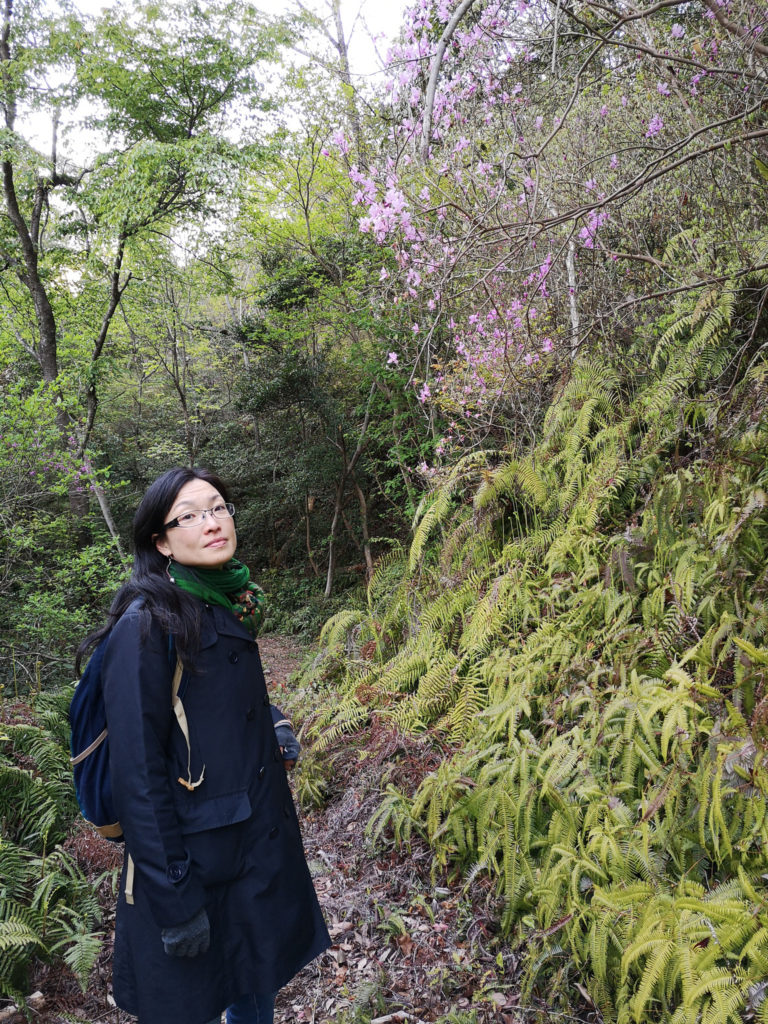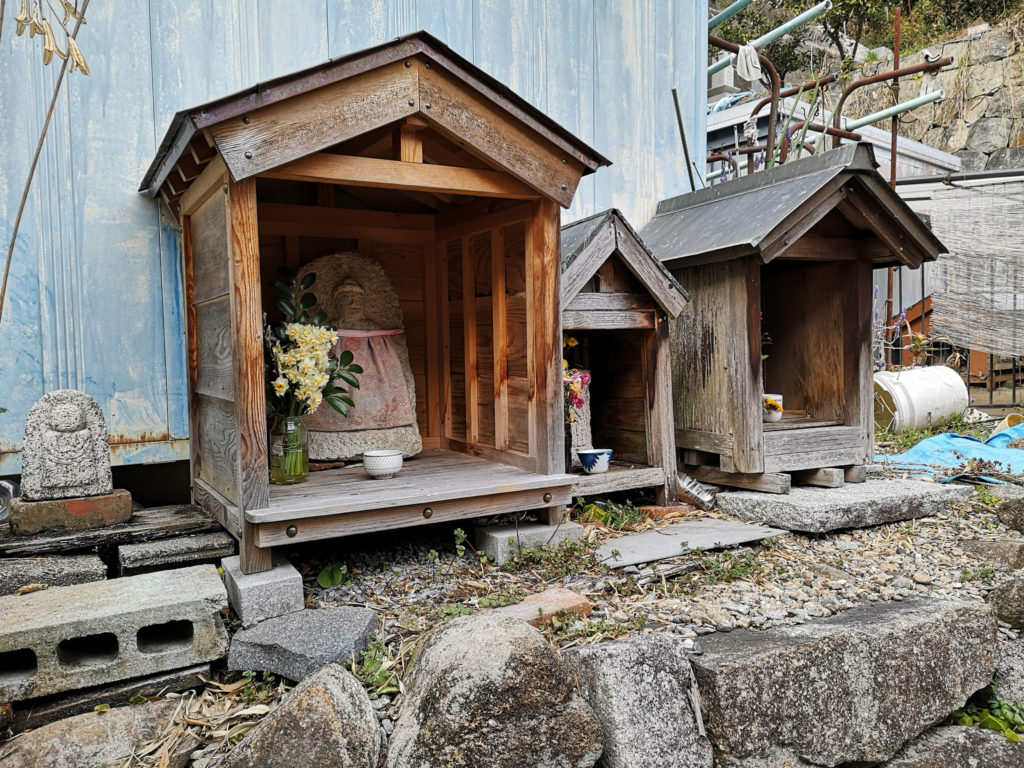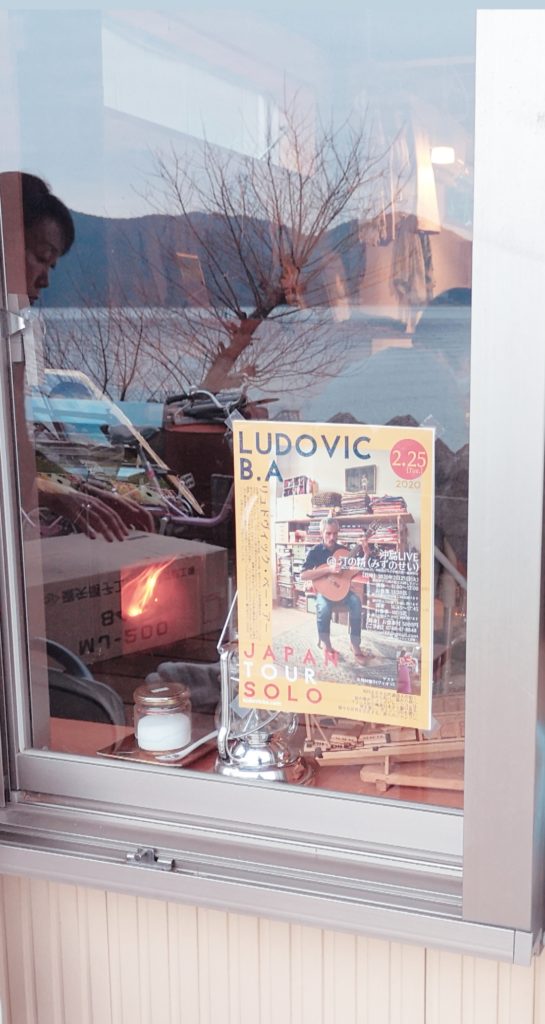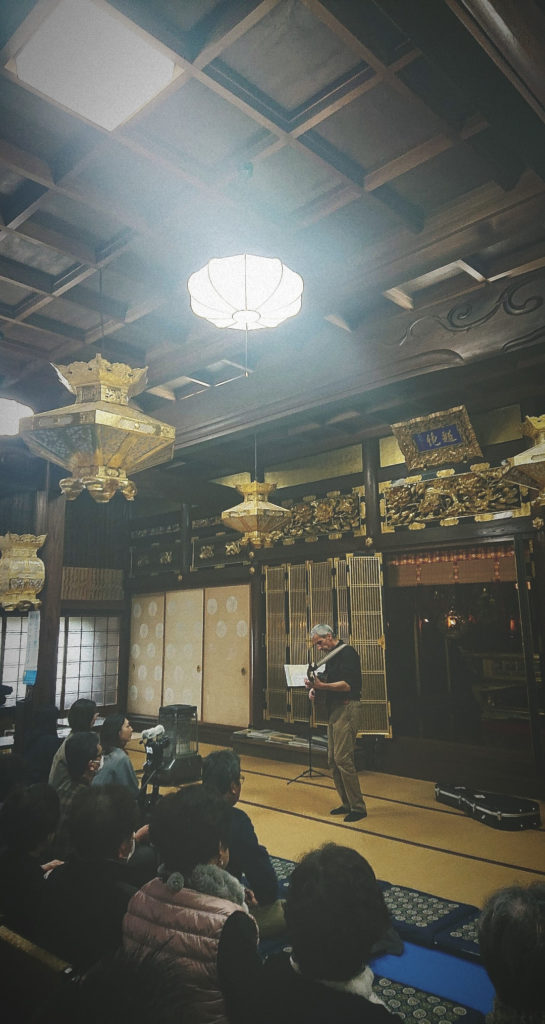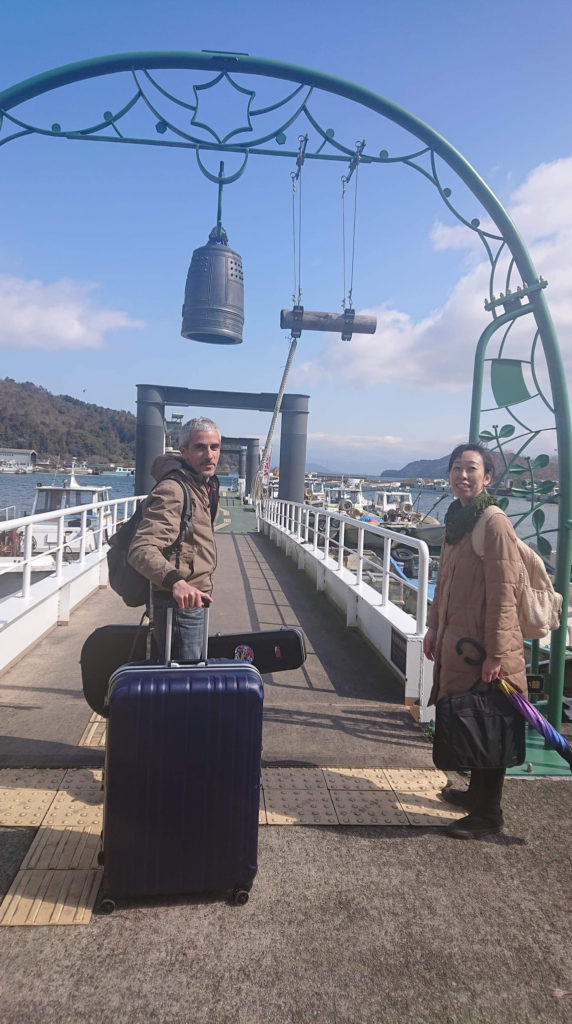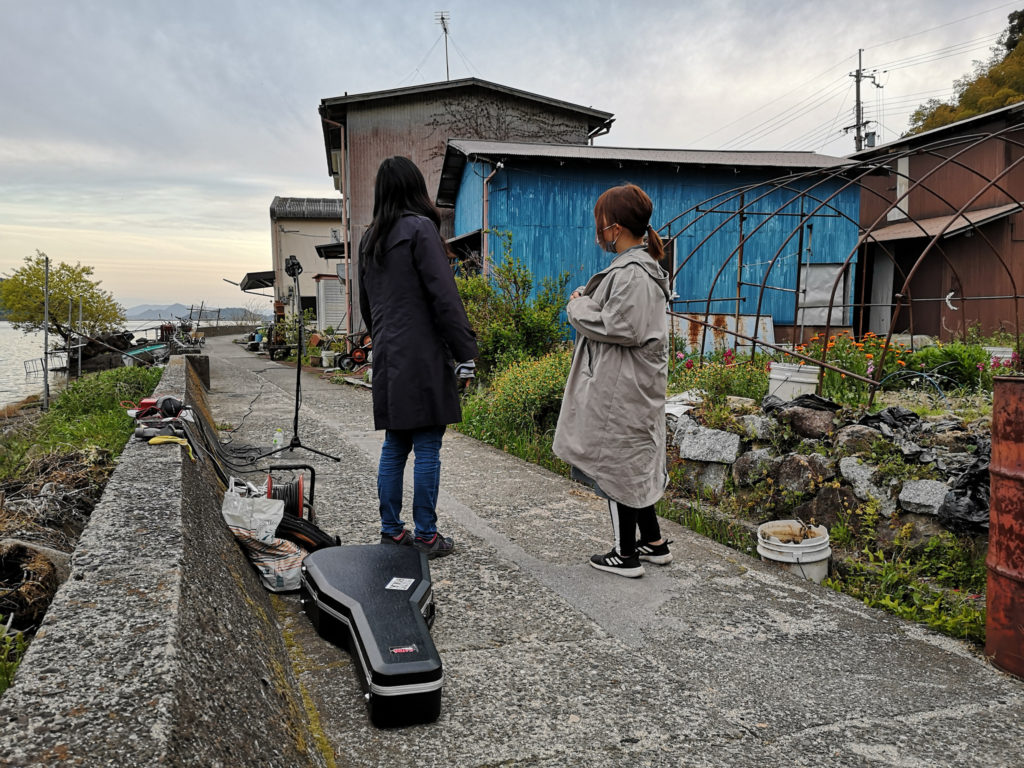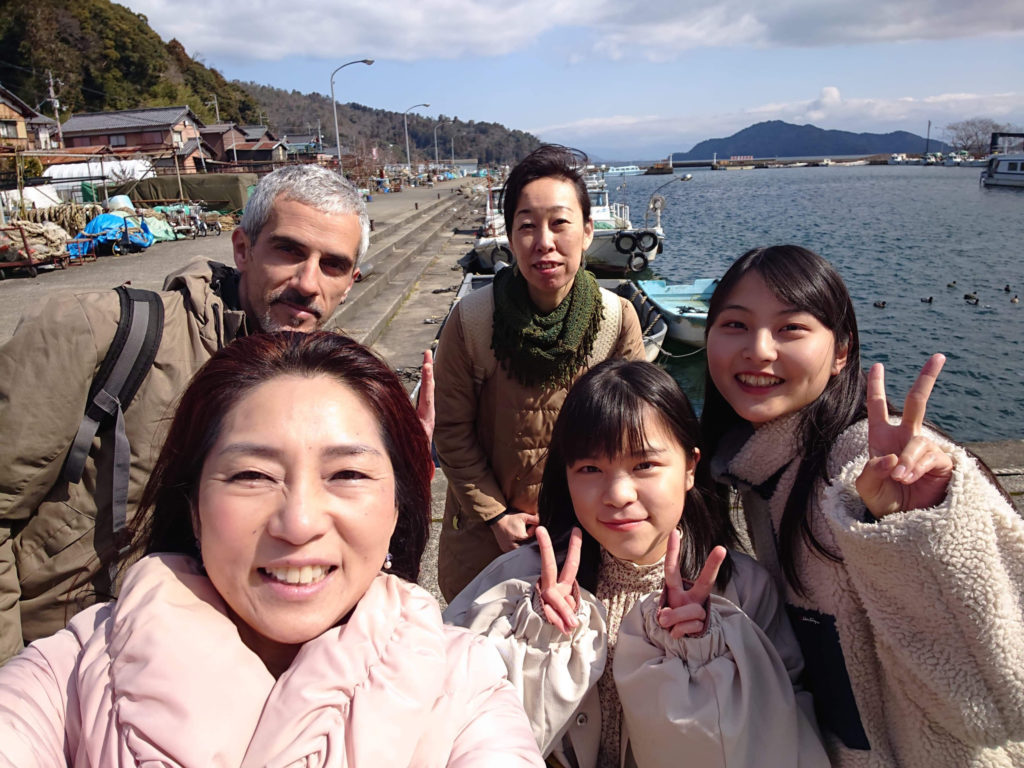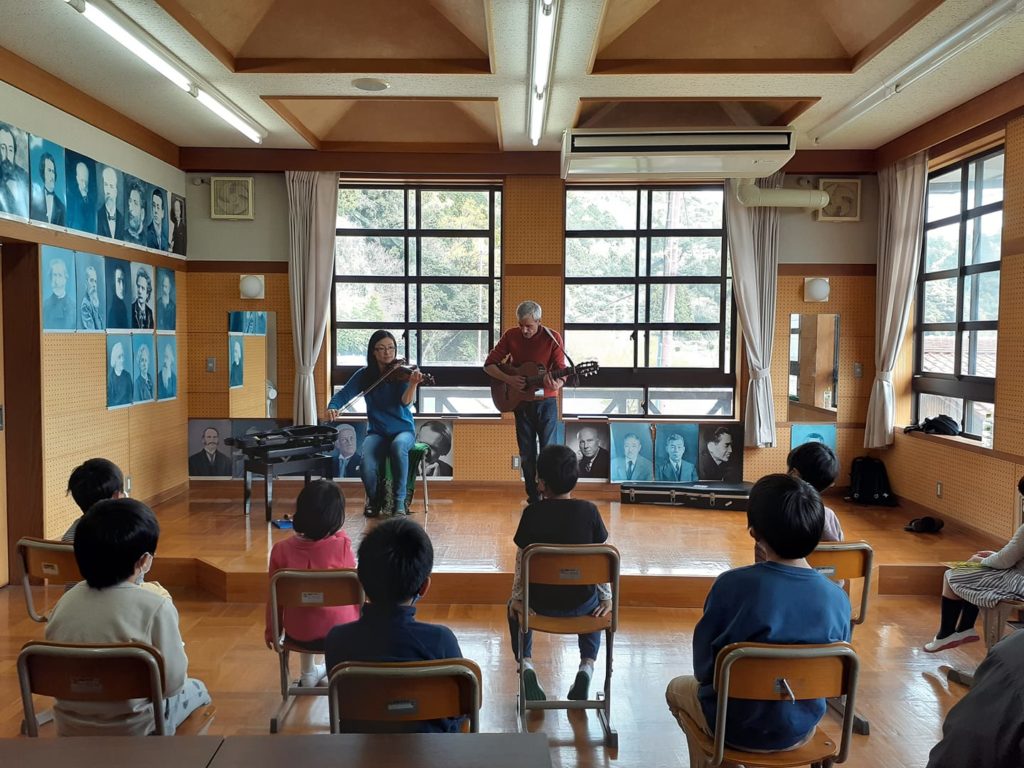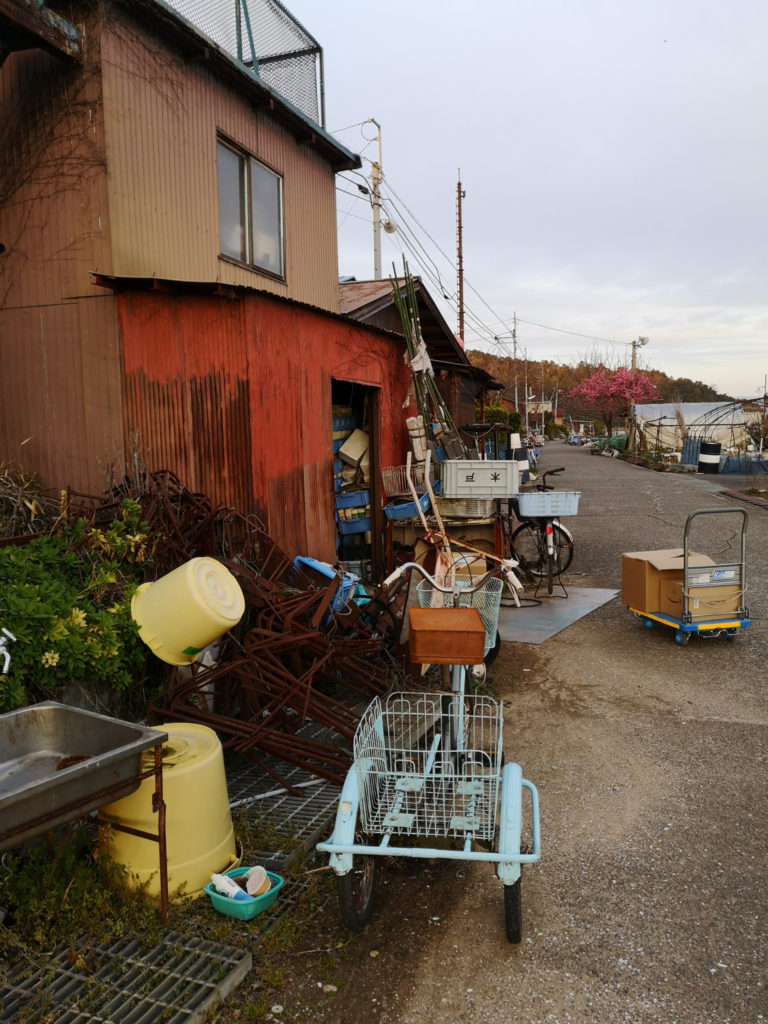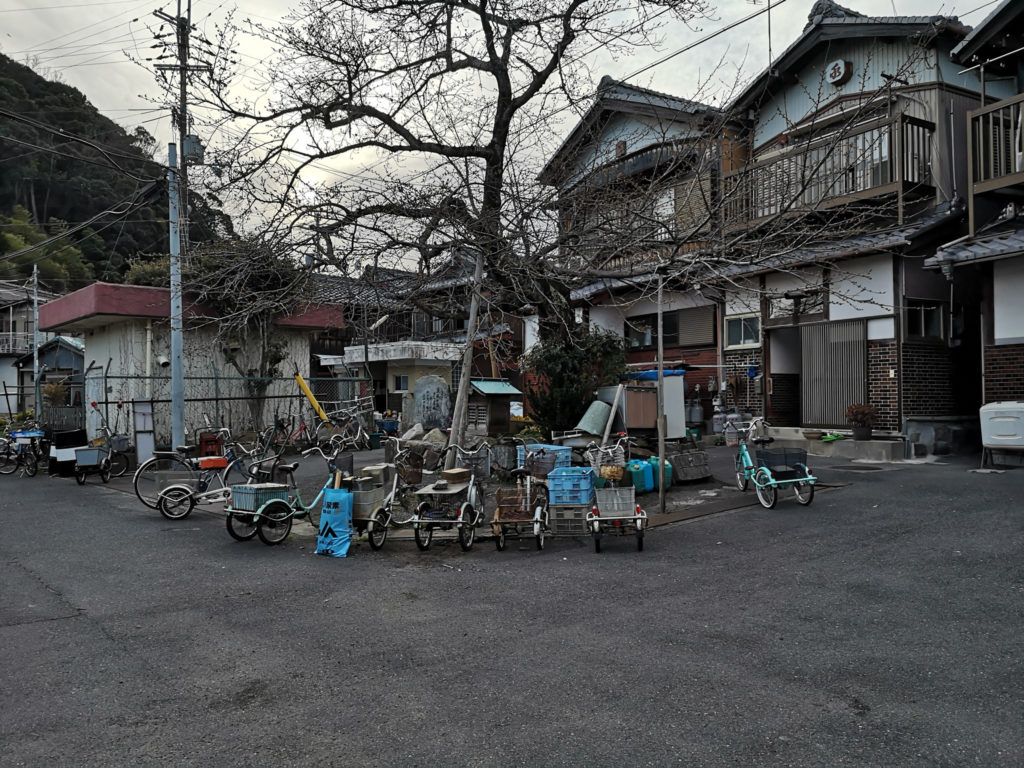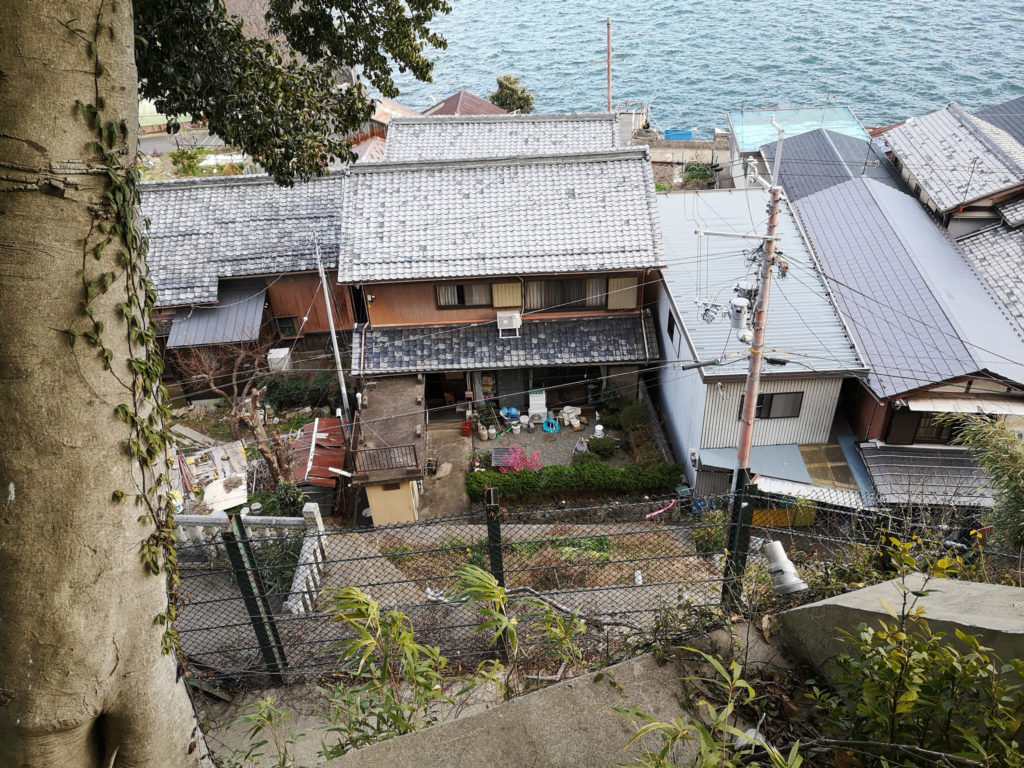A musical island
The island is a living poem. This is my second time coming here and these are the words that come naturally to me. I know why. This island is a world apart, out of time, and here all the elements resonate together in a space where things are reduced to the essentials. Like in a poem. And then there is the incessant clicking of thousands of objects rustling in unison when the wind blows, causing a harmonious melody to emerge that envelops the island. Okishima, also a musical island, appears like a mirage on Lake Biwa, this lake which takes its name from the Japanese lute because its shape evokes that of this instrument. This biwa is the instrument of the goddess Benzaiten, Buddhist deity of poetry and song, also associated with islands, the sea, everything that is fluid, everything that flows. Also, on the heights of the island, an altar is obviously dedicated to this deity.
Biwa also refers to the fruit of a tree whose instrument itself takes its name, that of the Japanese Medlar, a tree very present on the island. Everything fits.
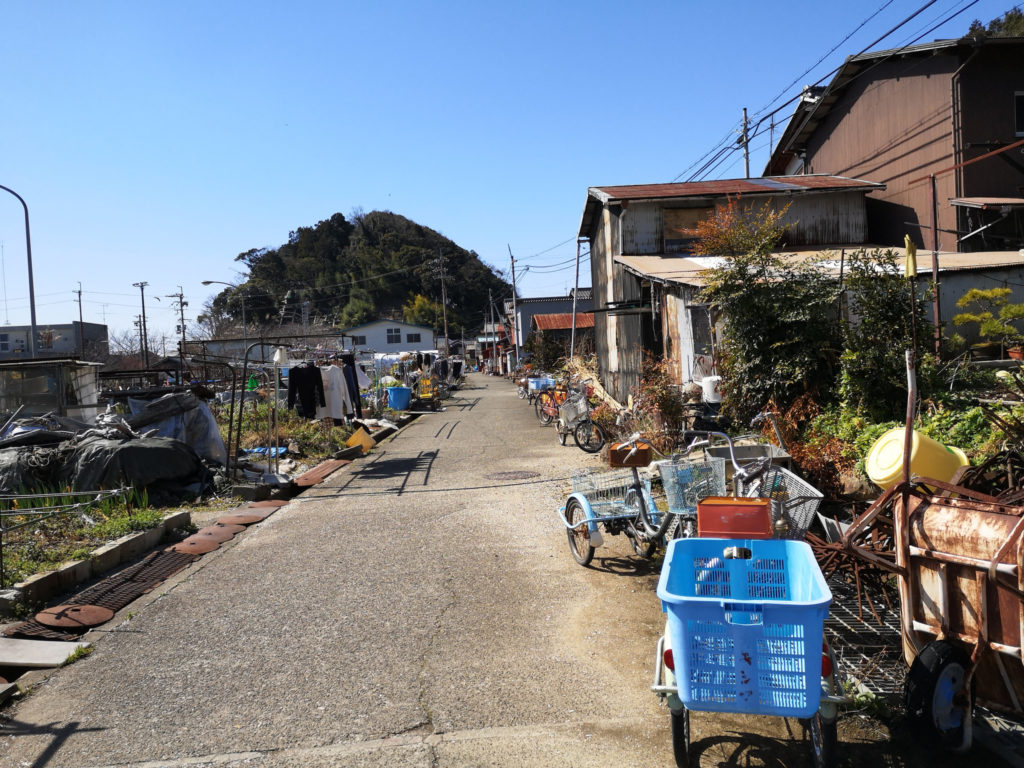
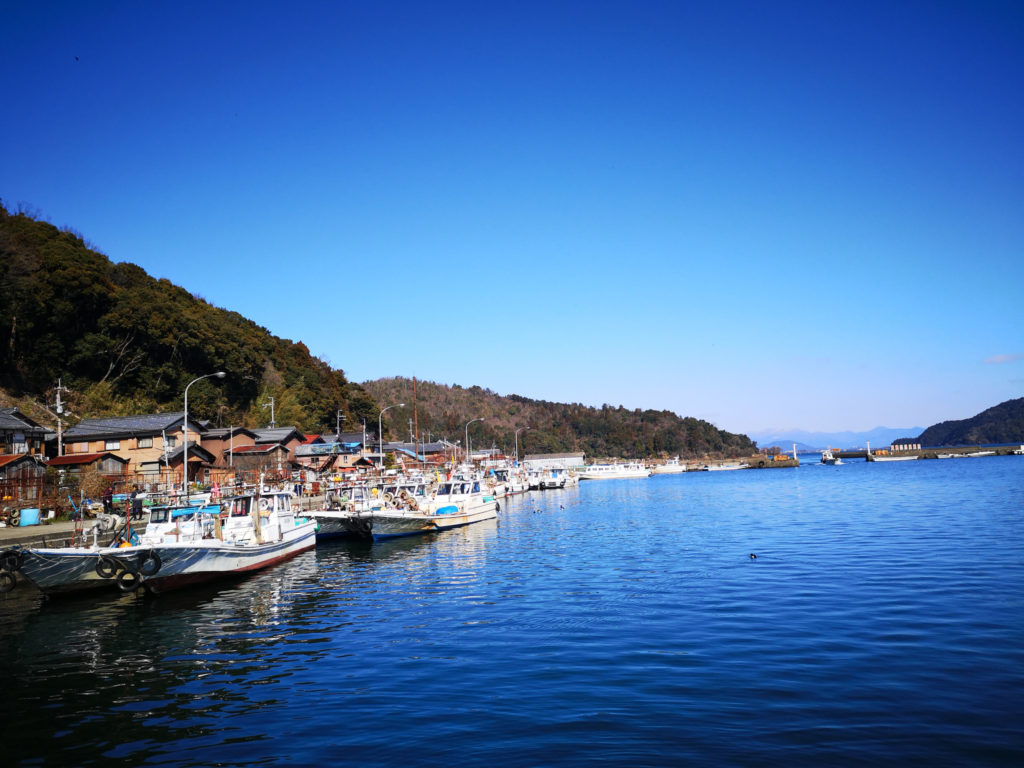
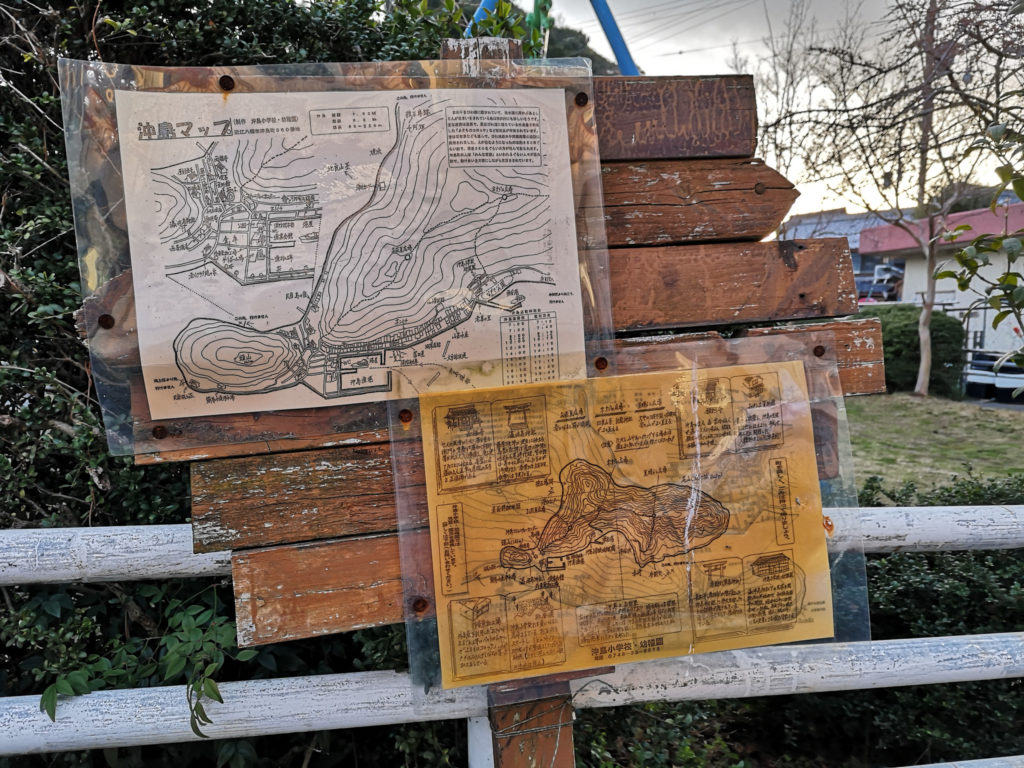
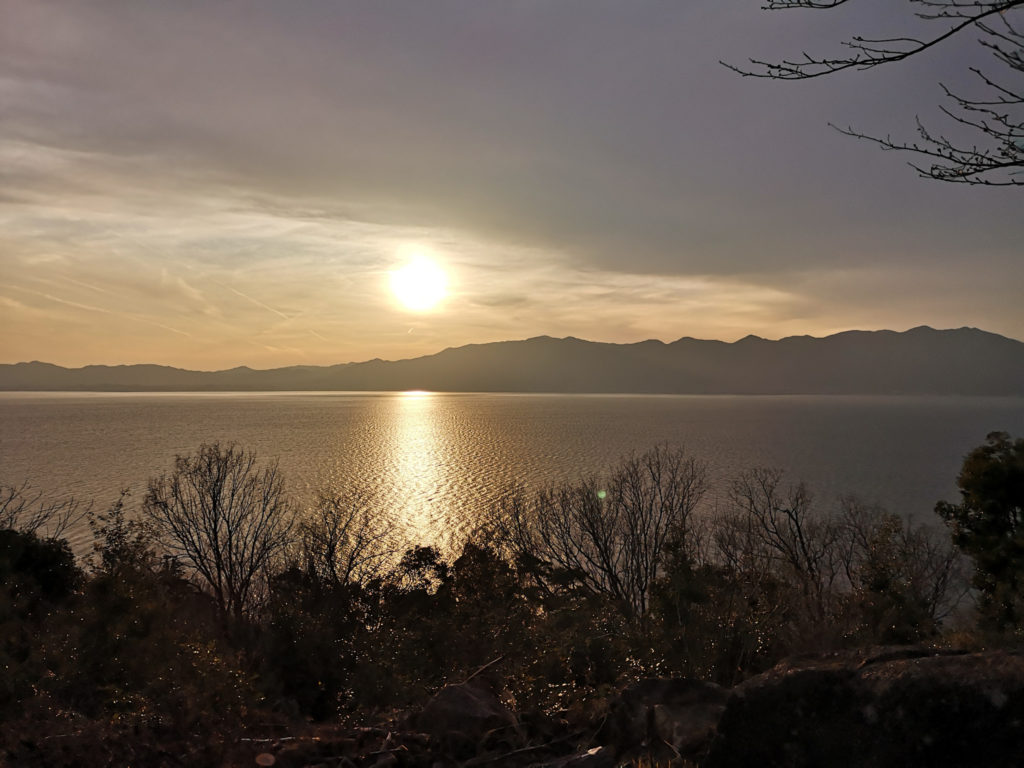
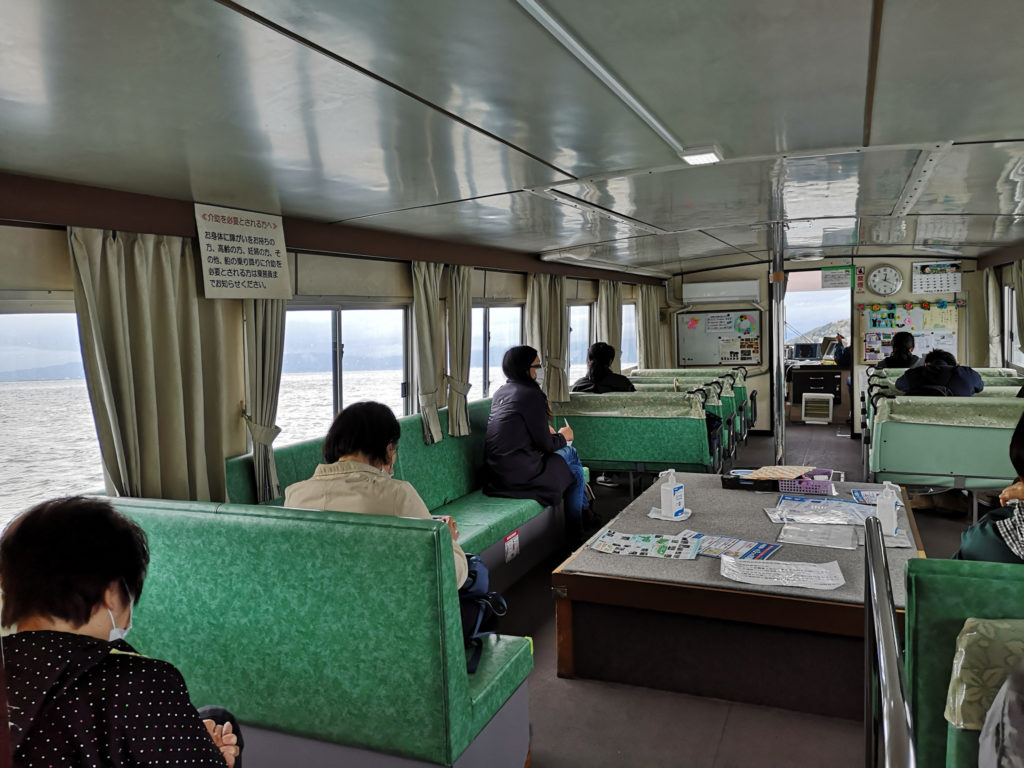

Lake Biwa is four million years old, it is one of the oldest lakes in the world and, a unique feature of the Japanese archipelago, made up of thousands of islands, of which just over 400 are inhabited, Okishima, the only island inhabited from Lake Biwa, is also the only inhabited freshwater island in Japan, with its 280 souls who inhabit it.
Here we can see that we keep a little more than elsewhere the memory of the link with mother earth and the need to keep it. This island is populated by many fishermen and many families have their own backyard. But what will it be in twenty years ? What is the future for this community which, for the most part, still knows how to find the resources to feed itself in its environment ? These are the questions we ask ourselves when discovering the island. The majority of the inhabitants here are old people and the few young people living there feel called by the horizon. We can understand them: in Okishima the island is small but the horizon is vast !
However, some people feel that living here is an opportunity and are keen to develop a certain autonomy there. They want to keep the island alive and imagine a future there. Thus the friend Hitomi-san, native of the island, patron of a small house full of light called Mizu-No-Sei, “The Water Fairy”, which is as much of the lighthouse as of the café-restaurant . This almost timeless refuge placed on the edges of the world, the perfect place to contemplate in drunkenness the moon and its reflection on the water, also serves as a gallery for some beautiful marginal artists, photographers, painters, and also musicians since we played at her house twice. Here we know how to warm up around a good wood fire. It is Hitomi who welcomes us here for the residency. She and a few people on the island are considering creating new dynamics to sell products other than fish from Okishima. They are also concerned about the various problems facing the island, particularly those related to plastic pollution, and would like to provide answers. But it’s not always easy, on an island where the average age is over 70 and where respect for the elders is paramount, getting things done.
Mizu No Sei – The Water Fairy
Vision
When we arrive on the island with Yoko, it’s a full moon. We welcome the Ise Dai Kagura, a ritual of sacred Shinto dances and music, dedicated to purification. For the occasion there is “Shishimai”, literally “The Lion Dance”. Arrived by boat in the morning from the coast, the members of this small troop visit the houses. A man with a lion mask, accompanied by the musicians, dances with sabers in front of each door, before returning then to recite a sutra. This is serious. This is all about chasing away bad luck and securing good harvests. It is with special attention, imbued with solemnity, that the inhabitants experience this moment.
As luck does not exist, arriving here on this full moon day and witnessing such a ritual resonates with me. We are here in a creative residency for Les Montagnes Bleues, a project that listens to Mother Earth, and we are witnesses to the vital memories that she blows to us, a kind of reminder, through this ritual connected to the invisible which is lost in the mists of time. As I write these lines, I think of the stele that stands at the entrance to the island, thanking the fish for their sacrifice.
I also think of the story of the founding of this incredible, magnificent and radiant temple, with its statue of Kannon built of sandalwood, which sits on top of a mountain on the coast not far from here, where we have gave a concert, and from which the horizon opens onto Lake Biwa in the distance, the Kannonshoji temple: http://lesmontagnesbleues.com/au-temple-des-sirenes/
At the end of this day having nourished me well, after a long walk on the forest and luminous summits of the island, it is with joy that in the evening, with the full moon shining on the lake, I am took refuge in Hitomi-san’s fairy house to write, “Sur l’île”, “On the Island”, which you will soon discover here and of which you can read an excerpt below.
Some pictures of the concerts on the island
“Sur l’île”
“On the island they came to open in the morning / A clicking sound, the waves and our thousands of dreams / They have clear blades, silver, the moon is full / To cut all the threads that pull us to the lake
The island has so much memory, just as much as it loses it / Here time does not pass, just as much as it is lost / So we need those who come back to us from the mountains / Horizons that we lost with their blades ”
Also, to discover or rediscover, a live filmed during the residency in Okishima, “Les Migrateurs”: https://www.youtube.com/watch?v=G3gsgDuHE7U&t=97s


